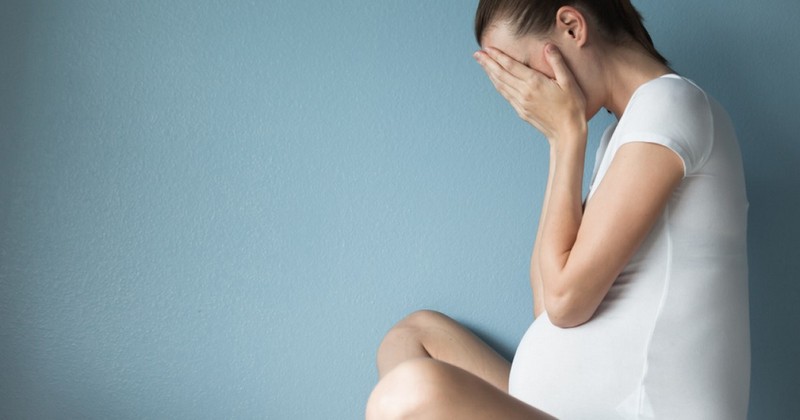Parturiphobia (childbirth phobia): symptoms, causes and treatment

Pathological fear of childbirth can have serious health implications for many women.
Parturiphobia or tocophobia is the pathological fear of labor.. Far from being an isolated experience, parturiphobia is a fairly common phenomenon among women of reproductive age. For this reason, several psychiatric and psychological studies have addressed it.
Here we explain how parturiphobia is defined, what types exist and how it is usually treated.
What is parturiphobia?
Parturiphobia is the pathological fear of childbirth. It is also known as tocophobia, which comes from the Greek "tokos" meaning "childbirth". It has only recently been described in terms of pathology, however, it is an experience that has accompanied many women over time.
Parturiphobia has at its core an uneasiness provoked by the contradiction between the expectation of being Biological mothers and the desire not to be so.. For the same reason, parturiphobia is considered a multidimensional phenomenon involving biological, psychological and social factors.
This phobia has had important consequences on the morbidity of pregnant women and also on the development of their children, making it a phenomenon that needs to be studied and worked on from different areas.
Irrational fear of childbirth: a pioneering study
Psychiatrists Kristina Hofberg and Ian Brockington have been two of the main references in the description of parturiphobia. In 2000 they conducted a qualitative study with 26 women who had an apparently unjustified fear of childbirth.
These authors have defined this phenomenon as the phobic state characterized by a specific anxiety or fear of death during a specific anxiety or fear of death during childbirth that precedes pregnancy, and which leads to avoidance of labor by all possible means, even when the woman intensely desires to have a baby.and which leads to avoidance of labor by all possible means, even when the woman intensely desires to have a baby.
The study was carried out with 26 women between 24 and 41 years of age, who were referred by obstetricians and psychiatrists from different hospitals in England. Some of them were married, some were not, most of the women had children without disabilities.
The women had given birth and had presented depressive episodes, anxiety disorders or post-traumatic stress disorders. They had been seen by a psychiatrist for about two years.
They were interviewed using an unstructured guide and focused on the women's life history related to their sexuality, their obstetric history (including past pregnancies, the possibility of abuse experiences and the use of contraceptive methods).
Through the interviews, the researchers found similarities in the women's experiences and fear of childbirth. Some reasons found to be behind parturiphobia include fear of dying during labor, the expectation of unfamiliar pain or suffering, the memory of or unknown suffering, the memory of pain from previous births, among others.
Types of parturiphobia
As part of the results of their study, Kristina Hofberg and Ian Brockington divided the manifestations of parturiphobia into two types: primary tocophobia and secondary tocophobia.
They also concluded that tocophobia can be considered not as a clinical condition in itself but as one of the symptoms of prenatal depression. one of the symptoms of prenatal depressiongenerally caused by the woman's belief that she is not able to go through labor, at least without dying in the attempt.
Primary Tortophobia
Primary tocophobia is when the fear of childbirth begins before pregnancy, even from the period of adolescence. In this case, sexual relations are usually carried out normally, i.e. without abuse, and different contraceptive methods are used on a regular basis.
Usually, despite the fear they feel, pregnancy is planned and carried out, which can aggravate the experience to the point of becoming a phobia. Women describe motherhood as a raison d'être and have an overwhelming desire to be mothers. have an overwhelming desire to be a motherThe need to avoid pregnancy and childbirth is combined with the demand and expectation of becoming mothers.
Some of the means by which they have calmed this fear has been through scheduled cesarean sections or terminations of pregnancy.
Secondary Tortophobia
Secondary tocophobia is that which occurs after a traumatic or significantly stressful experience. That is, it is the phobia that is produced by having had an unpleasant experience in a previous childbirth. For example, severe labor pains, perineal tearing, complications of childbirth due to fetal distress.
Around these experiences women have expressed that they thought they or the baby were going to die. In spite of this, many women seek another pregnancy, sometimes under the idea that the family is incomplete (for example, to give a sibling to the only child).
In many of these cases, miscarriages have occurred.The women were also relieved by abortions performed for medical needs, induced abortions, or programmed cesarean sections.
Several of the women also initiated a sterilization process after childbirth and some women who completed the pregnancy presented symptoms of post-traumatic stress disorder, and even some difficulties in establishing care bonds with their children.
Some approaches
Parturiphobia is currently one of the major fields of psychiatric and psychological research, which has led to the developmentThis has resulted in the development of specific psychotherapies to reduce the negative birth experience.
Likewise, the contradictions generated by motherhood (especially biological) as a sometimes overwhelming demand have been addressed from different perspectives of psychology and other social sciences. In any case, it is a topic that has gained relevance in the last two decades and that can generate very important knowledge for women and reproductive activity.
(Updated at Apr 15 / 2024)